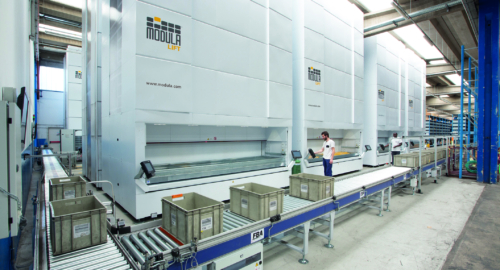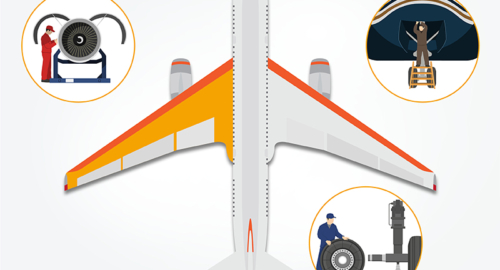The speed of delivery or return are fundamental to the success of e-commerce sites, which is why warehouse organisation is the first step in launching an online sales operation: without an excellent logistics system, an e-commerce business will never fulfill its potential.
E-commerce customers expect home delivery without additional costs and with short shipping times, sometimes even on the same day, and preferably with the option of choosing the time-band when the courier makes the delivery.
People talk about “time-based competition (TBC)”, a model in which time is the only competitive factor between different businesses. This implies profound changes in time-scales and there have been drastic changes to products’ life cycles.
Lockdown & E-Commerce: Boom of online sales and of new customers
Earlier this year, when the entire world faced a lockdown, the concept of e-commerce underwent an evolution, going from being an alternative to a physical store to becoming a real necessity.
Starting from mid-March 2020 there has been a double-digit surge in the turnover of consumer goods, reaching a maximum peak of +28%. In the week between 20 and 26 April 2020, the online market of large-scale distribution achieved an all-time three-digit record (+ 305%), stabilizing in the following days at an outstanding +150%. In other words, digital went from Nice2Have to MustHave.
Precisely in this period, it is estimated that there were about 2.5 million new digital users (1 out of 5 of the total of so-called “web shoppers”) who, thanks to the closure of most of the physical shops, made purchases via the internet. The data also show that the tendency to rely on online channels for purchases is constantly increasing: 64% of users believe e-commerce is essential to shop efficiently.
The Click & Collect method, that is, the possibility of ordering a product online and picking it up at the store, experienced a +349% growth and according to sound estimates, this method will increasingly become a well-established habit.
It is predicted that e-commerce will reach 55% worldwide in 2020 and for this reason it seems wise to review one’s own strategies to efficiently manage the logistics of an online business.
How is the management of logistics changing?
Logistics, initially merely the storage and transportation of goods, has now also become a fundamental ally of customer care in the achievement of customer satisfaction. This is because the e-commerce market requires products to meet demands for guaranteed, punctual delivery and a drastic reduction in lead time.
Until a few years ago, delivery of the product in 24 hours was a plus factor, but now it is almost de rigueur.
PwC reports that 88% of consumers are willing to pay for same-day or faster delivery. From Amazon Prime Air, which uses drone technology to deliver orders in 30 minutes or less, to the rise of delivery robot start-ups, delivery is becoming ever faster because the return on experience is one of the parameters on which consumers rate their brand experience.
The same applies to returns: customers expect rapid service with no extra additional costs. In practice, the successful management of an e-commerce business from the logistic point of view implies the management of what is actually a second retail store, better organised than a “real” store.
What are the strategies for the efficient management of e-commerce logistics?
Let’s take a look at Amazon, leader in the e-commerce sector. The company was the first to invest in the strategic role of logistics by opening huge warehouses across the world to cut the distance between the product and the customer. Products are subdivided by object size, grouping together all the units containing several products of the same size but which are never similar in type (the same cell will never contain two products of the same brand but different models). This helps to prevent human error but also increases proximity to the customer.
Businesses have to consider several factors when they decide to review their logistics model, such as:
- The time needed to complete an order cycle. From an order delivery time of 48 hours, today to be competitive same-day delivery is the aim. This means having a vast assortment of articles, an extremely well stocked warehouse, an inventory that is always up to date and a fixed location for every type of product.
- Another important factor is precision: orders must be complete, correct and, of course, not damaged. Usually, the online channel is required to handle several orders at once and preparing a number of orders at the same time may be complex, especially if the products are not placed inside the warehouse on the basis of a standardised logic. It may be useful, for example, to move goods with a high turnover to areas easily accessible to the operator.
It goes without saying, that redesigning not only the warehouse’s infrastructures but more importantly its organisation, is a crucial step in the field of e-commerce. One of the first choices to be made is the picking method: “man to goods” or “goods to man”?
Picking method: man to goods and goods to man
The “man to goods” picking method is still the most widely used, but it has a huge weak point: time. Everything depends on the operator’s speed and precision. How long will he take to move from one point to another in the warehouse to pick the article?
With the automatic vertical warehouse, this problem disappears, since the goods “travel to” the operator. Its operation is based on mobile trays which can move vertically and horizontally by an elevator. A control software contains the exact location of each article: the operator just types in a code and the goods he requires are delivered to his workstation.
Automation: the way forward to manage e-commerce logistics



